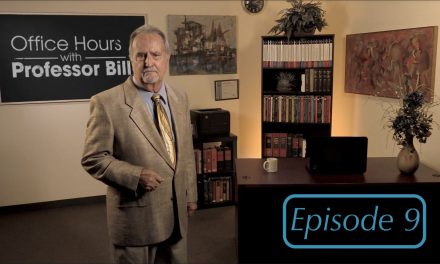Nationally, 2.2 million homebuyers negatively affected by the housing crisis will be eligible to re-enter the market and obtain mortgages by 2020, according to a release from TransUnion. TransUnion predicts 700,000 “boomerang buyers” – owners who lost their homes to foreclosure – are poised to re-enter the national housing market in 2015 alone.
These conclusions might sound reasonable at a glance, but do they hold up to scrutiny?
TransUnion’s numbers are pure speculation. There is no veritable data that demonstrates prior homeowners with the ability to re-enter the mortgage market after once losing a home to foreclosure will ever want to do so again.
Do boomerang buyers actually want to buy?
The Federal Reserve (the Fed) collected and reported data in 2013 devastating to TransUnion’s glib prediction. Only 13% of foreclosed homeowners in the mid-1990s returned to the housing market to buy a home in the 12 frenzied years between 1999 and 2011, according to the Fed’s study. Further, of the homeowners who were foreclosed on during the 2001-2003 period preceding the Financial Crisis, a mere 25% actually returned to the market by 2011.
Of the above sample, most of the homeowners who suffered the financial and social trauma of foreclosure never returned to homeownership at all. Instead, they chose (and continue to choose) to live risk-free in rental homes. In the context of single family residence (SFR) rentals, a landlord who rents to a foreclosed homeowner has a very solid, long-term tenant in place.
Studies like TransUnion’s which forecast a high influx of rubber-banding boomerang buyers fail to analyze just what induces a prior homeowner to return to the same market that recently scalded them so badly. Nor does it consider the slow and disappointing recovery currently keeping a heavy lid on the demand for homeownership.
Trends wrought by California’s recovery
Credit scores in California are improving; however, personal debt and stunted wage growth continue to loom over potential buyers and adversely influence their decisions. Though the number of California residents finding employment is rising dramatically, wages are not keeping up with inflation, much less rent and mortgage rates which are beginning to steadily climb in a tandem blow to homeownership – no savings and less borrowing capacity.
Boomerang buyers’ diminished personal savings also contribute to the hesitation to buy. Personal savings rates have fluctuated since the housing crash as homeowners attempt to stockpile earnings in anticipation of another recession – no differently than the Fed’s preparation through the interest rate increases coming later this year.
Constant increases in California’s population make it difficult to balance homeownership with employment as the surplus of workers keeps wages low. Only when the state’s employment market levels out, thus driving wages up, will demand for homeownership truly start to revive in a sustainable manner.
California’s homeownership rate continues on a decelerating downward trend for several reasons, foreclosures being just one. The homeownership rate likely won’t stabilize until 2017 at the earliest, which is when bankruptcies and strategic defaults will again re-enter the equation to purge the remaining underwater homeowners from negative equity.
Millennials are proof of the multifaceted effort required to attain homeownership. Though Millennials may be building up good credit, they did and are taking on significantly greater student loans for a shot at an upgrade in what remains a weak employment market.
Consider also that all nations are in worse economic shape than the U.S. Global weakness will take a toll on our rising employment, likely late this year. At about the same time the Fed will begin raising interest rates, which will cause other countries to have problems attracting investment capital while we import deflation, both of which are bad for California wage growth and home sales.
The best-paying jobs for the educated and skilled are rooted in already impacted cities, raising the price of ever more elusive rental units. As evidence, look no further than San Francisco. Young renters are spending large chunks of potential savings monthly on escalated urban rent. They believe they will eventually earn decent wages, begin to save and make decisions about where and in what type of property they wish to live.
Thus, good credit alone does not a homebuyer make. The factors affecting the mortgage and real estate markets are simply not the same today as they were during the 2000’s housing boom.
Overcoming the stigma
Having been at zero lower-bound interest rates for almost eight years, few people have any concrete sense of what occurs when interest rates begin their inevitable ascent. Rising rates will trigger asset deflation, following 30 years of asset inflation due primarily to declining interest rates. This deflation may come as a shock, as the Greenspan Put is no longer available.
Credit unions may report as many optimistic estimates as they please, but it will take a significant helping of luck to even remotely approach their expectations that potential boomerang buyers will actually buy. Boomerang buyers are permanently traumatized by the housing crash. They do not feel safe purchasing new homes and putting themselves again at risk for overwhelming mortgage debts and foreclosures that are a lost paycheck away.
Those who borrow to buy will certainly not go for risky adjustable rate mortgages (ARMs), having learned all about them first-hand in the 2000s. Even if buyers are able to borrow and buy with good credit, most still have not amassed enough savings to make a significant down payment or have sufficient reserve requirements for mortgage payments.
Re: “TransUnion: 1.5M hit by mortgage crisis can re-enter housing market in next 3 years,” from HousingWire















I saw that Fannie Mae’s Homepath finance and marketing group is offering 3% toward home purchase. If the powers that be offer near zero down again, that could change the story from doom to boom…..to doom again. They wouldn’t be edging in that direction, now would they?